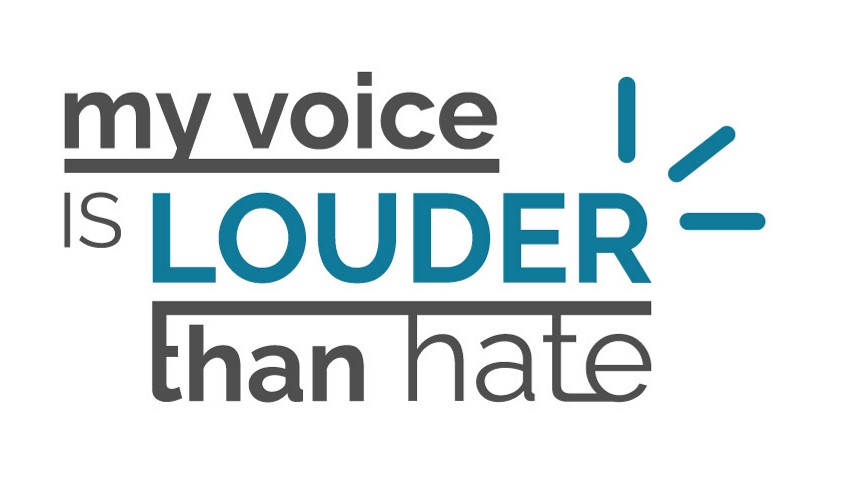My Voice is Louder Than Hate
 My Voice is Louder Than Hate is a multimedia lesson resource designed to empower students in Grades 9 to 12 to push back against hate and prejudice in their online communities.
My Voice is Louder Than Hate is a multimedia lesson resource designed to empower students in Grades 9 to 12 to push back against hate and prejudice in their online communities.

 My Voice is Louder Than Hate is a multimedia lesson resource designed to empower students in Grades 9 to 12 to push back against hate and prejudice in their online communities.
My Voice is Louder Than Hate is a multimedia lesson resource designed to empower students in Grades 9 to 12 to push back against hate and prejudice in their online communities.

My Voice is Louder Than Hate, MediaSmarts’ latest resource, uses digital storytelling and meme making tools to encourage youth to push back when they encounter hate online.

In this lesson, students explore how interacting through digital media can make it easier to hurt someone’s feelings and can make hurtful or prejudiced behaviour seem normal in online spaces. They learn how Canadian youth feel about and respond to casual prejudice online and then use the My Voice is Louder Than Hate tool to create a digital story that will help people understand that online hate hurts everyone who witnesses it.

Level: Grades 9 to 10
About the Author: Matthew Johnson, Director of Education, MediaSmarts
Duration: 1 to 1 ½ hours
This lesson is part of the My Voice is Louder Than Hate program. This program was possible with financial contributions from Public Safety Canada’s Community Resilience Fund.

The My Voice is Louder Than Hate teacher’s guide provides an expanded discussion of topics such as online hate, casual prejudice, dehumanization and digital citizenship and detailed instructions on how to present the My Voice is Louder Than Hate lessons in a way that will be emotionally safe for students.

My three kids all know the password to my phone.
It’s because I rely on them to play secretary for me when I’m driving. If the phone rings or there is a bing of a text, 99% of the time it’s a member of my immediate family trying to get in touch with something relatively pressing.

In today's day and age, social media is everywhere. If you own a smartphone or computer of any sort, odds are you have at least one social media account and checking it is a part of your everyday routine. In high school, you’re constantly surrounded by social media! Whether it’s Facebook, Twitter, or Instagram, high school life nowadays revolves around these three entities. It’s a great way to connect with friends, make plans, help spread information if you’re in a school club or sport, and it can even help you meet new people. Although there are many great things social media can offer, there can be a couple downsides too.

The internet has become a prime means of communication worldwide and this unprecedented global reach – combined with the difficulty in tracking communications – makes it an ideal tool for extremists to repackage old hatred, raise funds and recruit members. As the internet has grown and changed, hate groups and movements have adapted, creating websites, forums and social network profiles, becoming active in spaces such as online games and even creating parallel versions of services such as Twitter, YouTube and GoFundMe.
